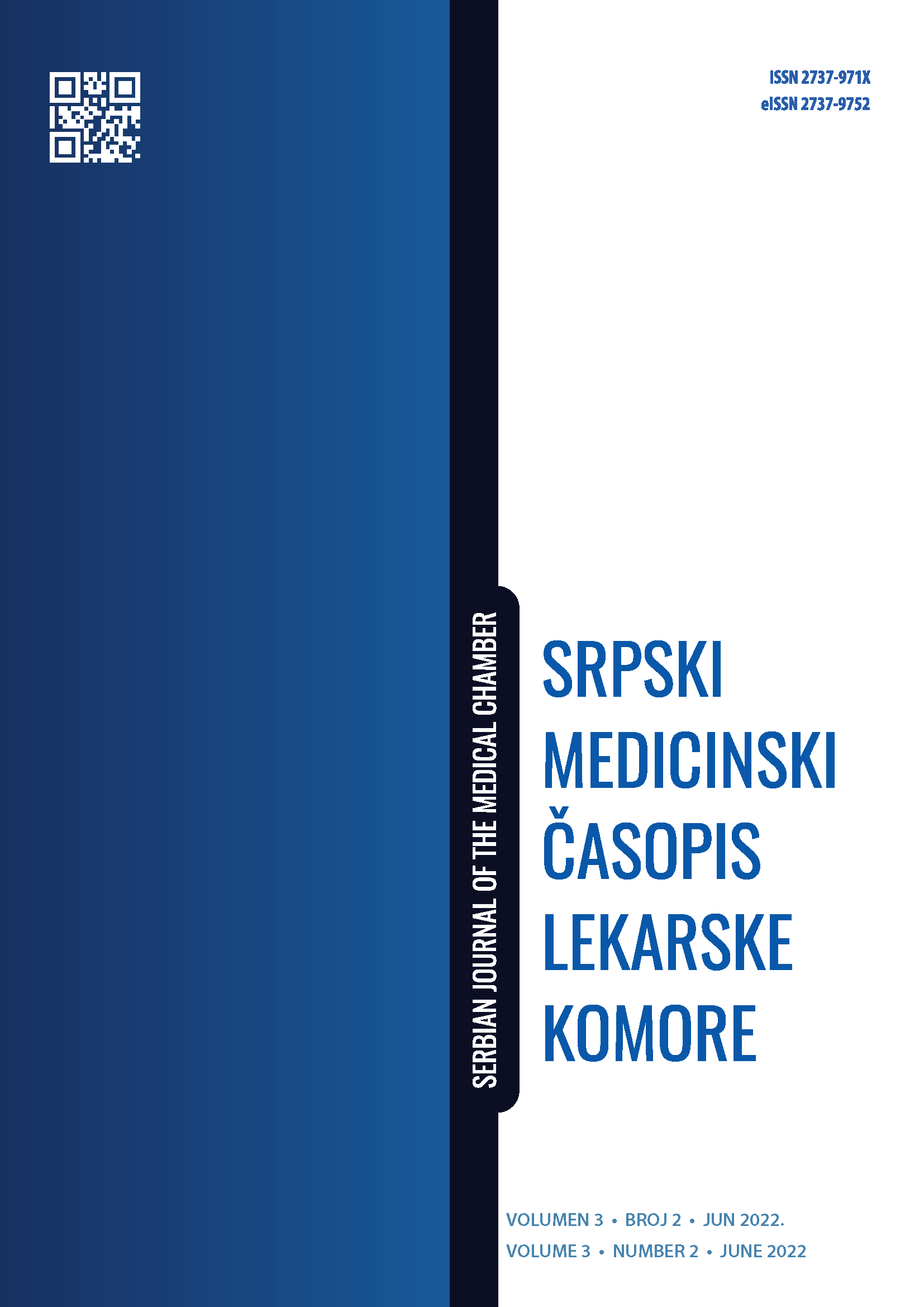AN INTERESTING CASE OF CORONARY-CAMERAL FISTULA WITH ANGINA PECTORIS
Abstract
Introduction: Coronary-cameral fistula (CCF) is an anomalous connection between a coronary artery and a cardiac chamber. Most CCFs are discovered incidentally during angiographic evaluation of coronary vascular disorders. We report a case of CCF with angina pectoris.
Case report: A 67-year-old woman presented with chest pain and dyspnea upon exertion. Coronary angiography showed atherosclerotic lesions in the two major coronary arteries, but also communication between three arteries and the cavity of the right ventricle (RV) through many small, diffuse fistulas. Angiography also showed a fistula between the proximal left anterior descending artery (LAD) (first septal branch) and the right ventricle, as well as between the proximal right coronary artery (RCA) (acute marginal branch) and the right ventricle. The patient qualified to undergo coronary artery bypass graft surgery (CABG) and surgical closing of the fistulas, which is why we performed, on a beating heart, double vessel revascularization by autovein graft between the ascending aorta and the RCA and between the ascending aorta and the LAD, as well as closing of the fistulas with hemoclips and polypropylene suture, with a teflon pledget.
Conclusion: Hemodynamically insignificant fistulas, which are clinically silent and not associated with other abnormal findings, most commonly do not require further treatment. Large, hemodynamically significant fistulas should be closed by ligation. However, smaller fistulas tend to get larger with age and it is recommended that early elective closure is performed in patients experiencing symptoms or in asymptomatic patients with a continuous murmur or a systolic murmur with an early diastolic component.
References
- Krause W. Ueber den Ursprung einer akzessorischen A. coronaria aus der A. pulmonalis. Z Ratl Med 1965; 24:225-9.
- Yamanaka O, Hobbs RE. Coronary artery anomalies in 126,595 patients undergoing coronary arteriography. Cathet Cardiovasc Diagn 1990;21:28-40.
- Iadanza A, del Pasqua A, Fineschi M, Pierli C. Three-vessel left-ventricular microfistulization syndrome: a rare case of angina. Int J Cardiol 2004;96:109-11.
- Iyisoy A, Arslan Z, Ozmen N, Kursaklioglu H, Amasyali B, Demirtas E. Double coronary fistulas between coronary artery and left ventricle: a case report [in Turkish]. Gulhane Tip Dergisi 2003;45:203-5.
- Alkhulaifi AM, Horner SM, Pugsley WB et al. Coronary artery fistulas presenting with bacterial endocarditis. Ann Thorac Surg, 1995; 60: 202–204.
- Kaplan JD, Redberg RF. Coronary to pulmonary artery fistula detected by transthoracic echocardiography. Am Heart J, 1995; 129: 839–840.
- Kidawa M, Peruga JZ, Foryś J et al. Acute coronary syndrome or steal phenomenon — a case of right coronary to right ventricle fistula. Kardiol Pol, 2009; 67: 287–290.
- Funabashi N, Komuro I. Aberrant fistula arteries from the left main branch and right coronary artery to the left pulmonary arterial sinus demonstrated by multislice computed tomography. Inter J Cardiol, 2006; 106: 428–430.

